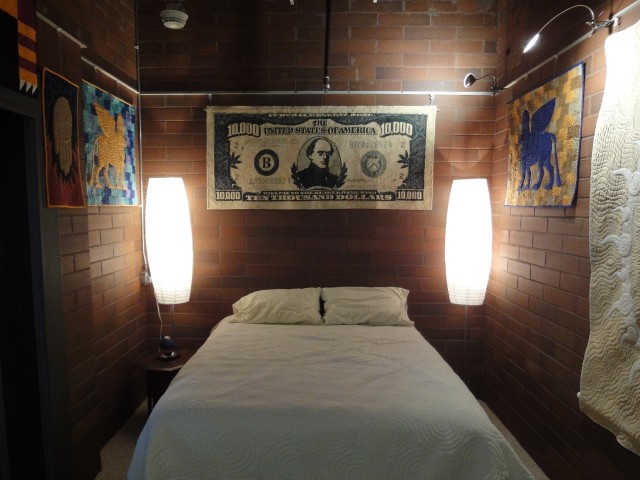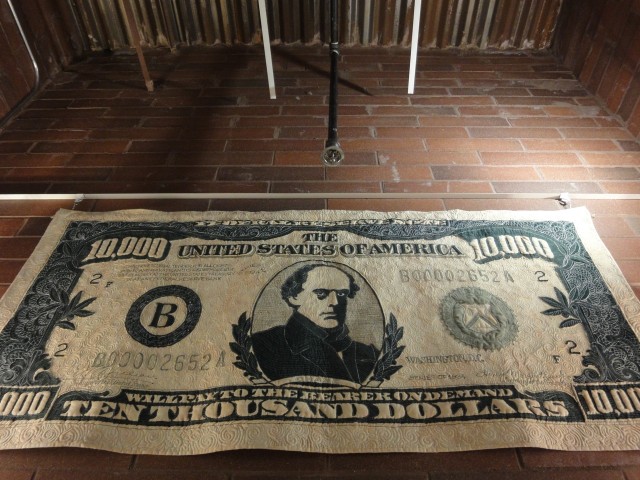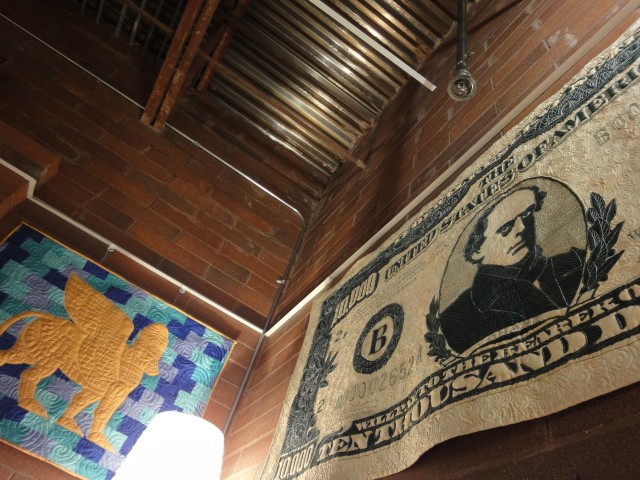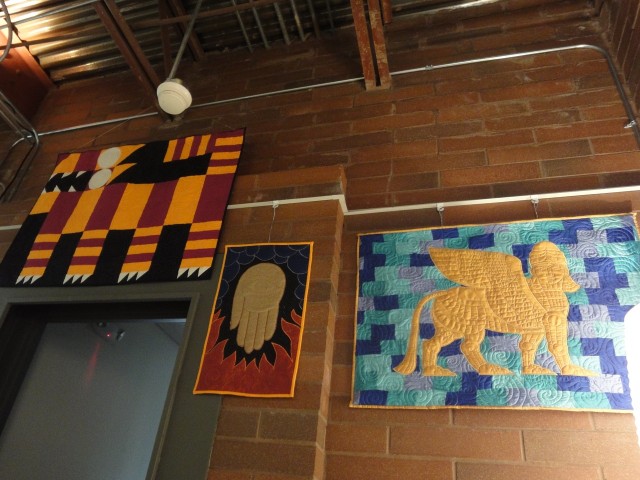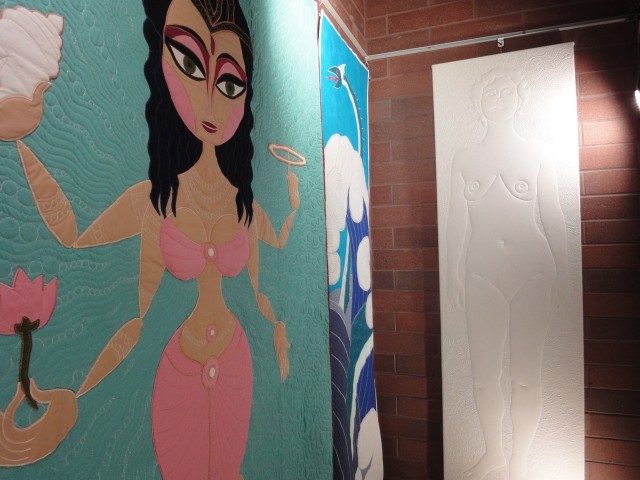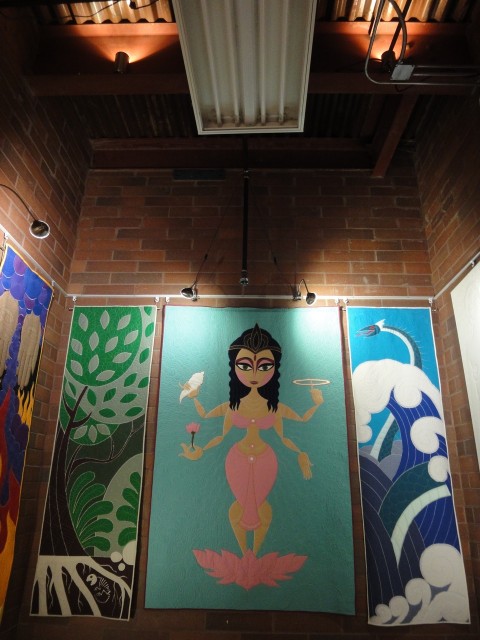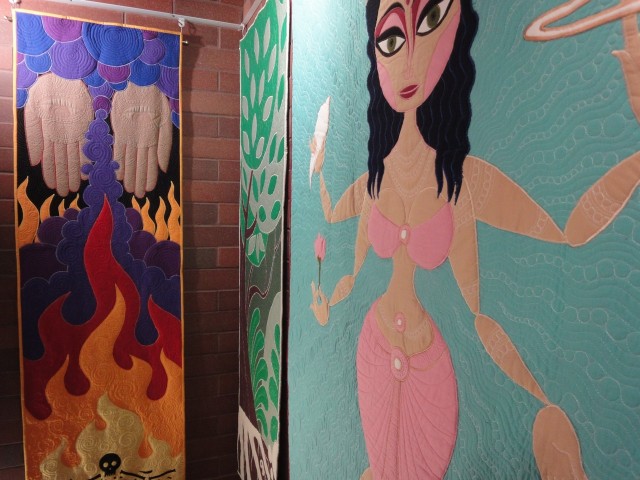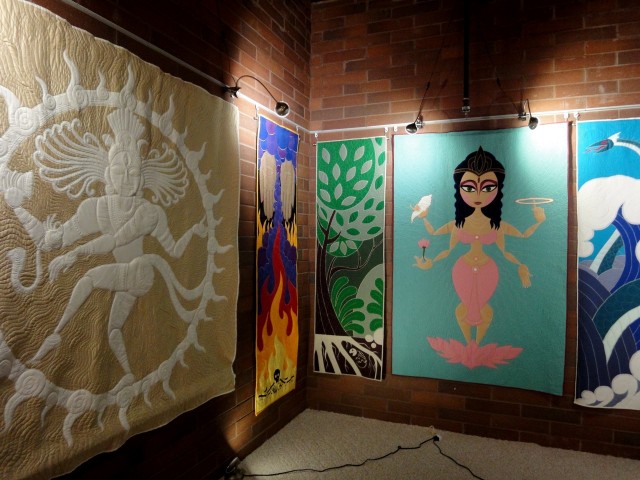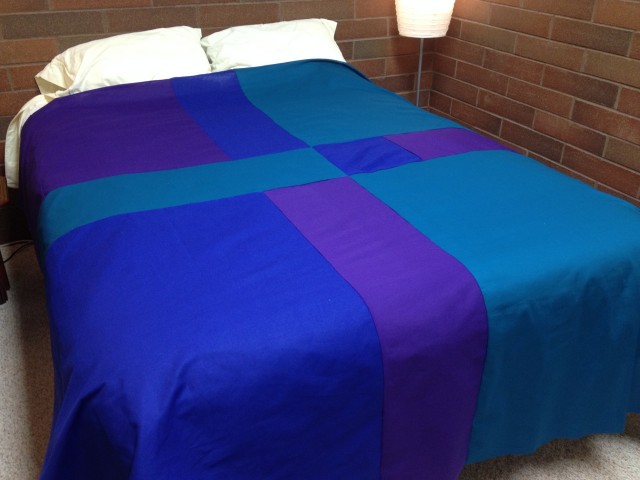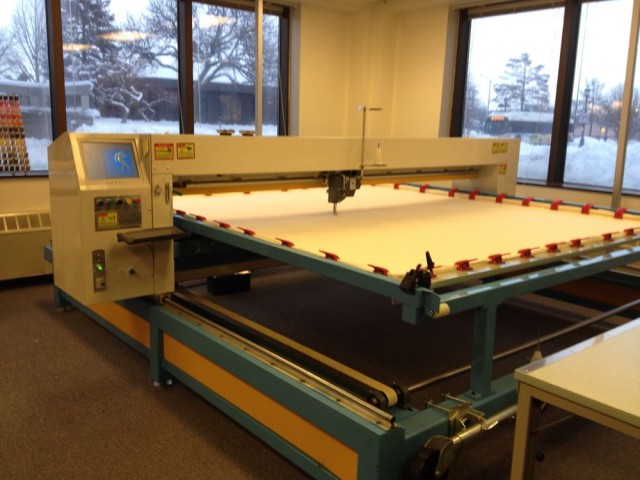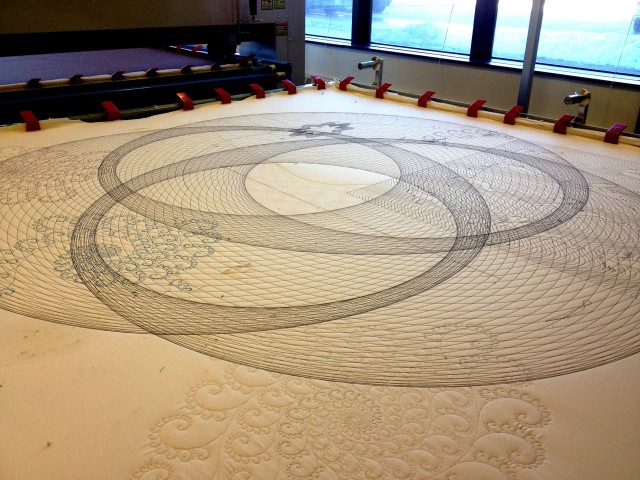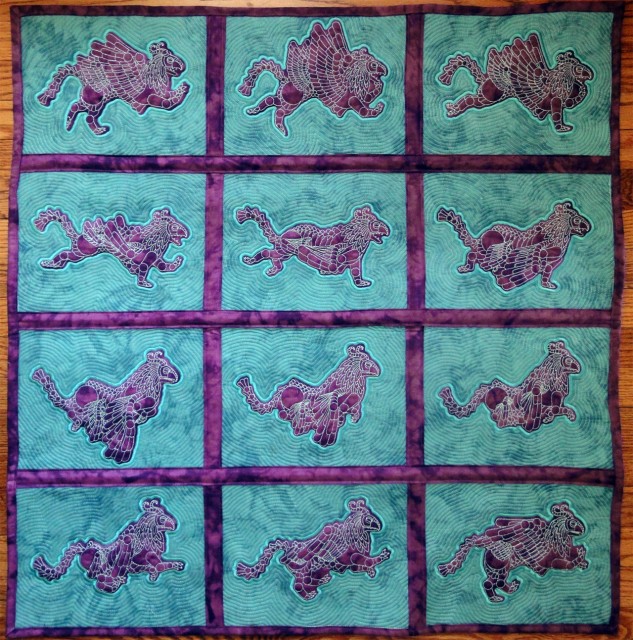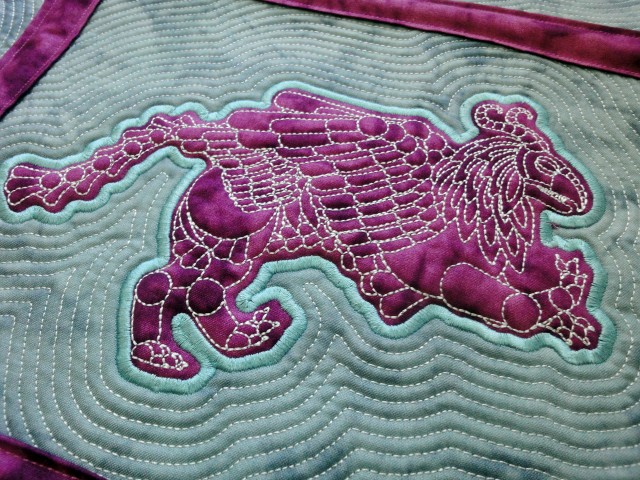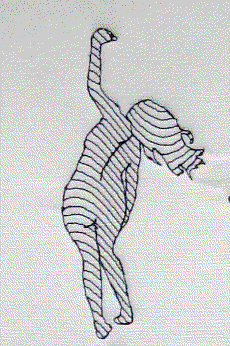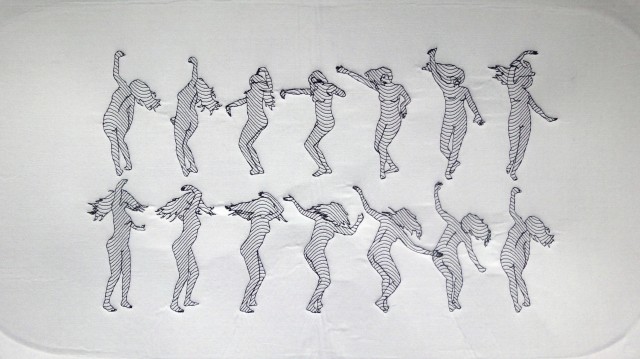A great “machine’s-eye-view” of our quilt plotter is at the one-minute mark of this Apple promo video. In addition to creating the Mathematica user interface and co-founding Touch Press, Theo is Science Officer of our own PaleGray Labs.
Category: quilting
The Quilt Vault
The PaleGray Labs office/workshop/studio is in a former bank building, which is why our suite contains a vault.
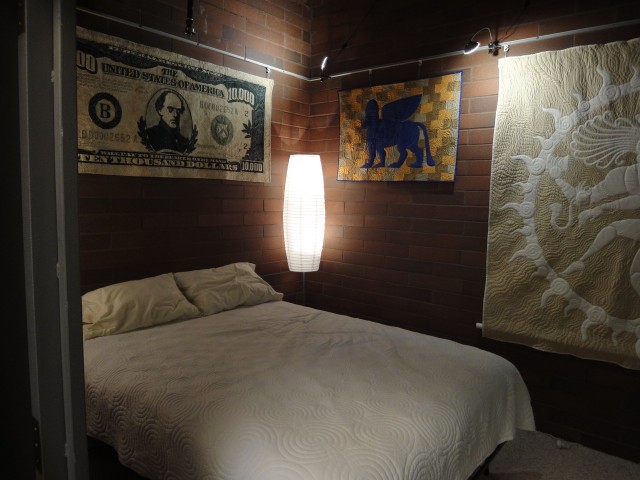
When I bought a new mattress I stored the previous one in the office vault before it found a new home. I quickly realized the vault could be its new home, and the home of my art quilts, freshly returned from Sleepy Creek Vineyards. And so the Quilt Vault was born.
Even though Theo’s kids call the Quilt Vault a “sex dungeon,” having a real bed on site is practical for a quilt studio. I’m currently designing minimalist quilt tops using the 44″ wide bolts of colored fabric I bought last year, to have more colorful bases for complex stitch patterns. The bed provided instant visual feedback as I pieced this together:
Of course it is also excellent for naps.
Fibonacci Sequins and other news from PaleGray Labs
PaleGray Labs being the textile art collaboration of me and Theodore Gray. First up, we have a photo of Mathematician Ian Stewart holding up PaleGray Labs’ “Fibonacci Sequins” quilt Theo just gave him in London:
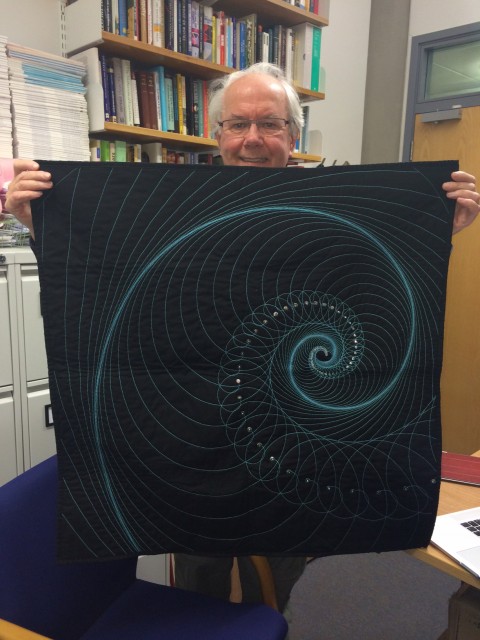
This was designed by me and Theo using a Mathematica tool he created for that purpose, stitched on the new quilt plotter, and bound on my 100-year-old Davis Vertical Feed treadle machine. I hand-sewed on the sequins and beads. This was a test, but we plan to make more of them, including large bed quilts.
What I call the “quilt plotter” is a Quilt Master IV Full Frame Quilting System. Actually the model IV isn’t on their web site yet – we’re early adopters! – but you get the idea.
Below are some initial experiments with the quilt plotter. We’re still getting the hang of this thing, and working out some software issues that will require communicating through a Chinese interpreter some time in February after Chinese New Year vacations are over.
All stitchcoding by Theo using tools he built in Mathematica. Above we have fibonacci spiral fractals, a big guilloche pattern, and a modified dancing Reena Shah cycle from Sita Sings the Blues. All just tests, because the machine ripped the fabric before we learned to let it “cycle” on before moving the head (a problem that could be fixed with improved software, but until we get the ear of the Chinese software company that controls its operating system we just have to be very careful and do a lot of work-arounds).
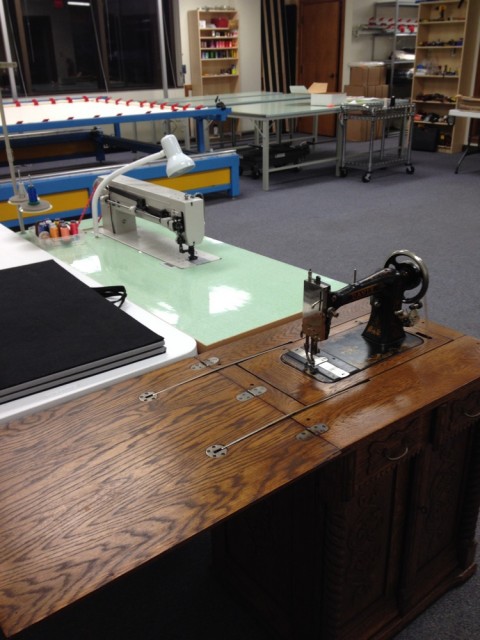 Here’s my treadle-operated Davis Vertical Feed, which I am in love with. It makes binding almost a pleasure, a physical game of skill, a kind of meditation. If it weren’t for the time it takes to cut and iron the binding strips, I could see binding all PaleGray Labs quilts with this. (I’m also experimenting with bias tape and a Suisei binder attachment on my Singer treadle and Featherweight, which have the necessary mounting screw holes but lack the genuine walking foot that quality binding needs). Behind the Davis is the new 20″ long arm zig-zag machine, designed for making sails but which I intend to use for trapplique. It’s a powerful beast but we don’t get along because something’s wrong with its tension. The company is sending me a new tension assembly which will hopefully fix the problem.
Here’s my treadle-operated Davis Vertical Feed, which I am in love with. It makes binding almost a pleasure, a physical game of skill, a kind of meditation. If it weren’t for the time it takes to cut and iron the binding strips, I could see binding all PaleGray Labs quilts with this. (I’m also experimenting with bias tape and a Suisei binder attachment on my Singer treadle and Featherweight, which have the necessary mounting screw holes but lack the genuine walking foot that quality binding needs). Behind the Davis is the new 20″ long arm zig-zag machine, designed for making sails but which I intend to use for trapplique. It’s a powerful beast but we don’t get along because something’s wrong with its tension. The company is sending me a new tension assembly which will hopefully fix the problem.
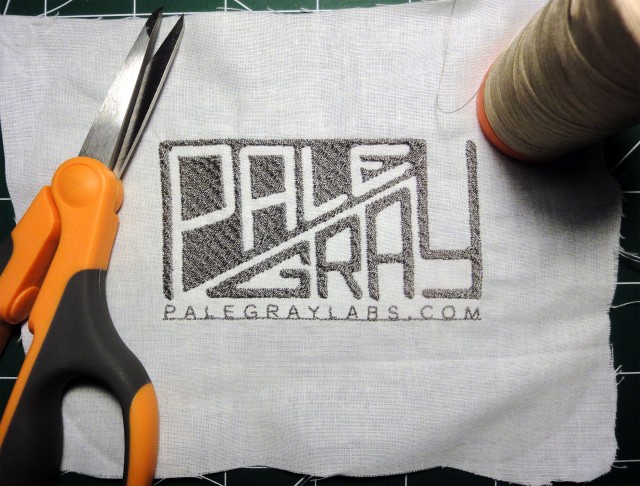 The domain palegraylabs.com currently just reroutes to the “Quilting” category of this blog. Hopefully we (meaning I, helped by Webmaster Ian) will design a nice web site of its own soon.
The domain palegraylabs.com currently just reroutes to the “Quilting” category of this blog. Hopefully we (meaning I, helped by Webmaster Ian) will design a nice web site of its own soon.
Davis Vertical Feed restoration
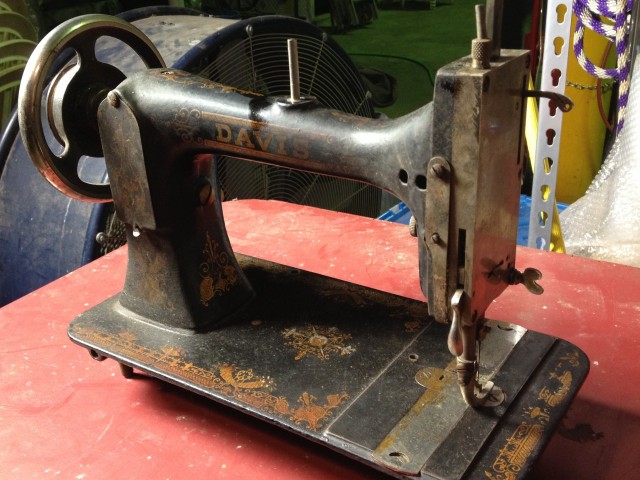
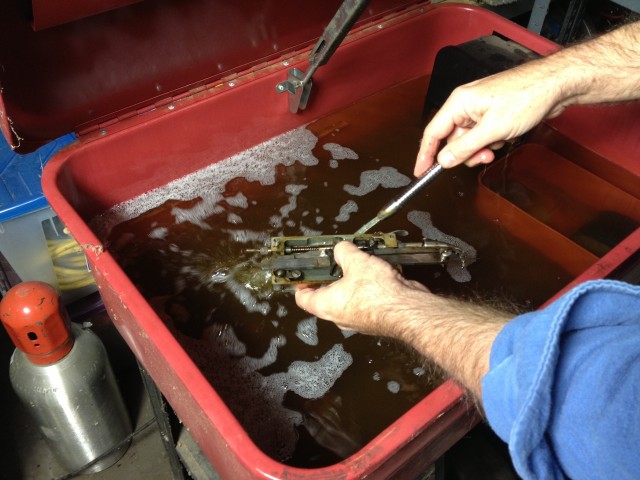
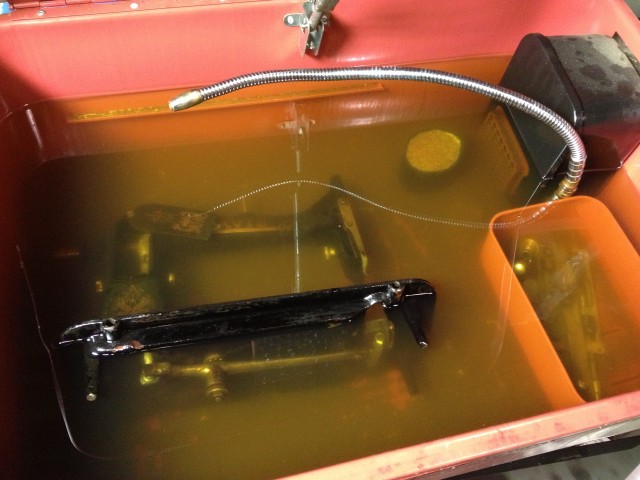
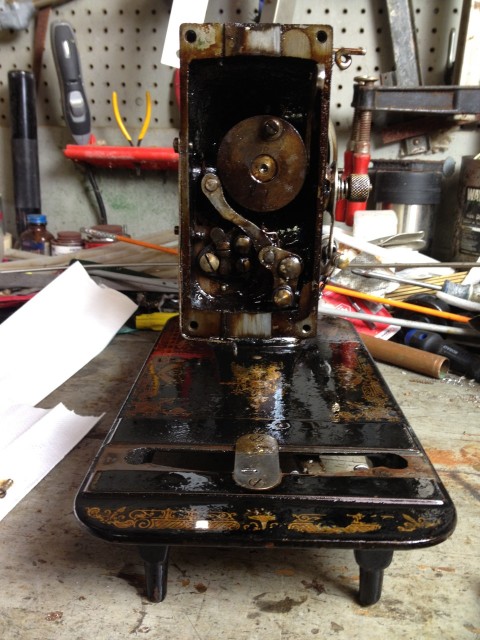
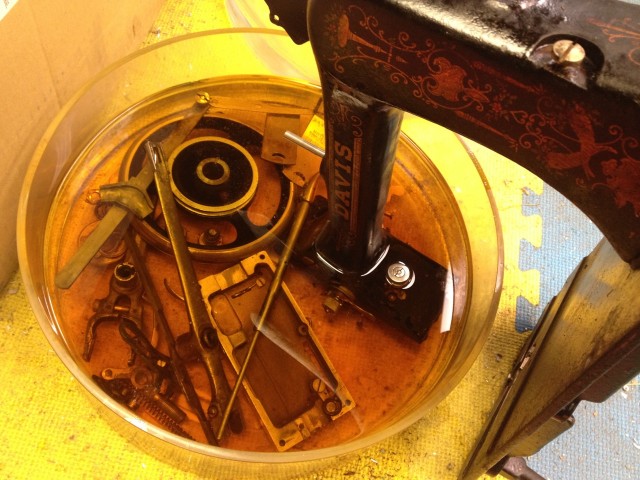
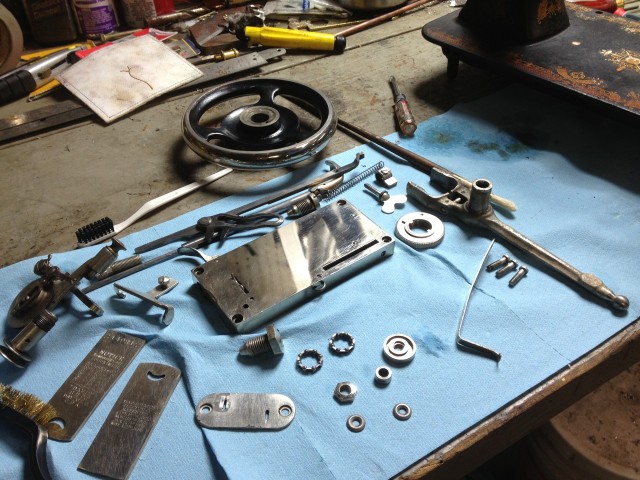
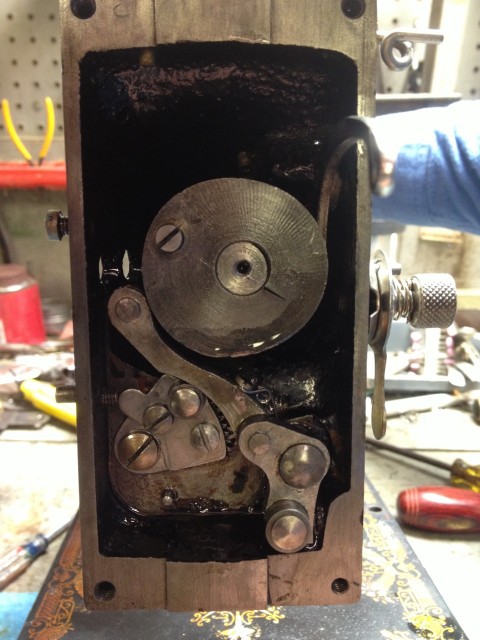
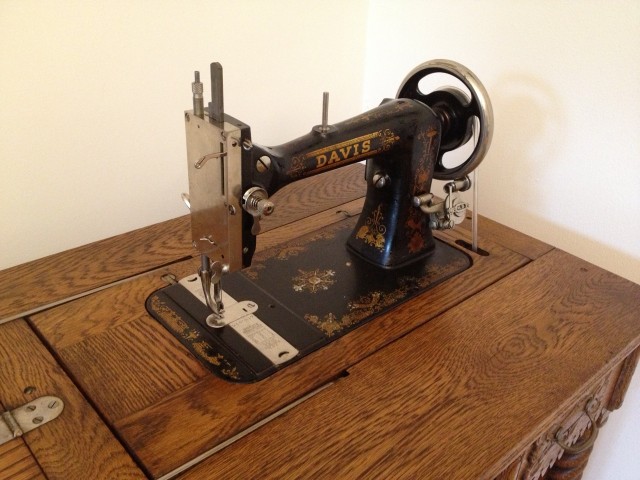
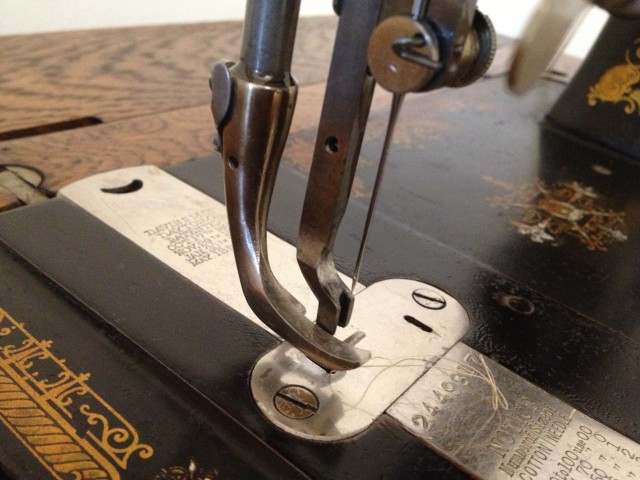
Blogger’s Quilt Festival – “Ziz” quiltimation in Art Quilts
Approximately 32″ square. Cotton fabric, cotton/bamboo batting, rayon thread. Machine embroidery, quilting, trapplique.
I’m submitting this in Art Quilts because there’s no “animation” category in the Blogger’s Quilt Festival. 😉 I’m happy to have it in an online show, because you can easily see it animated:
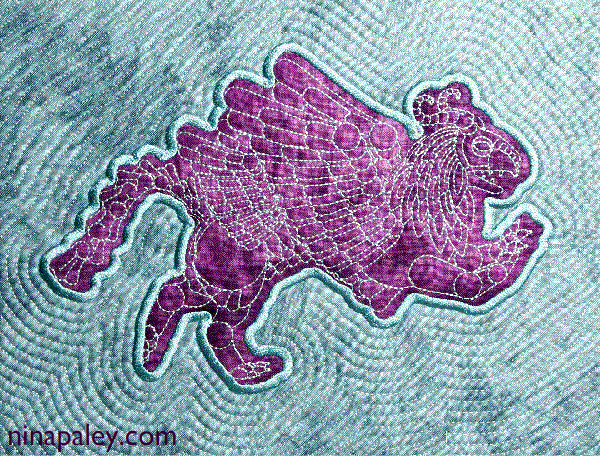 Each block of the quilt is a frame in the animated cycle above. I created the animation, exported as vector images which Theo Gray stitchcoded in Mathematica. Each block was stitched in 2 parts on our embroidery machine: first the Ziz (gryphon) figure, then the background. I cut out and applied the former to the latter and the machine “trappliqued” it down and did the echo pattern. Finally I zigzag stitched the blocks together, topstitched homemade bias tape over the seams, and bound it.
Each block of the quilt is a frame in the animated cycle above. I created the animation, exported as vector images which Theo Gray stitchcoded in Mathematica. Each block was stitched in 2 parts on our embroidery machine: first the Ziz (gryphon) figure, then the background. I cut out and applied the former to the latter and the machine “trappliqued” it down and did the echo pattern. Finally I zigzag stitched the blocks together, topstitched homemade bias tape over the seams, and bound it.

